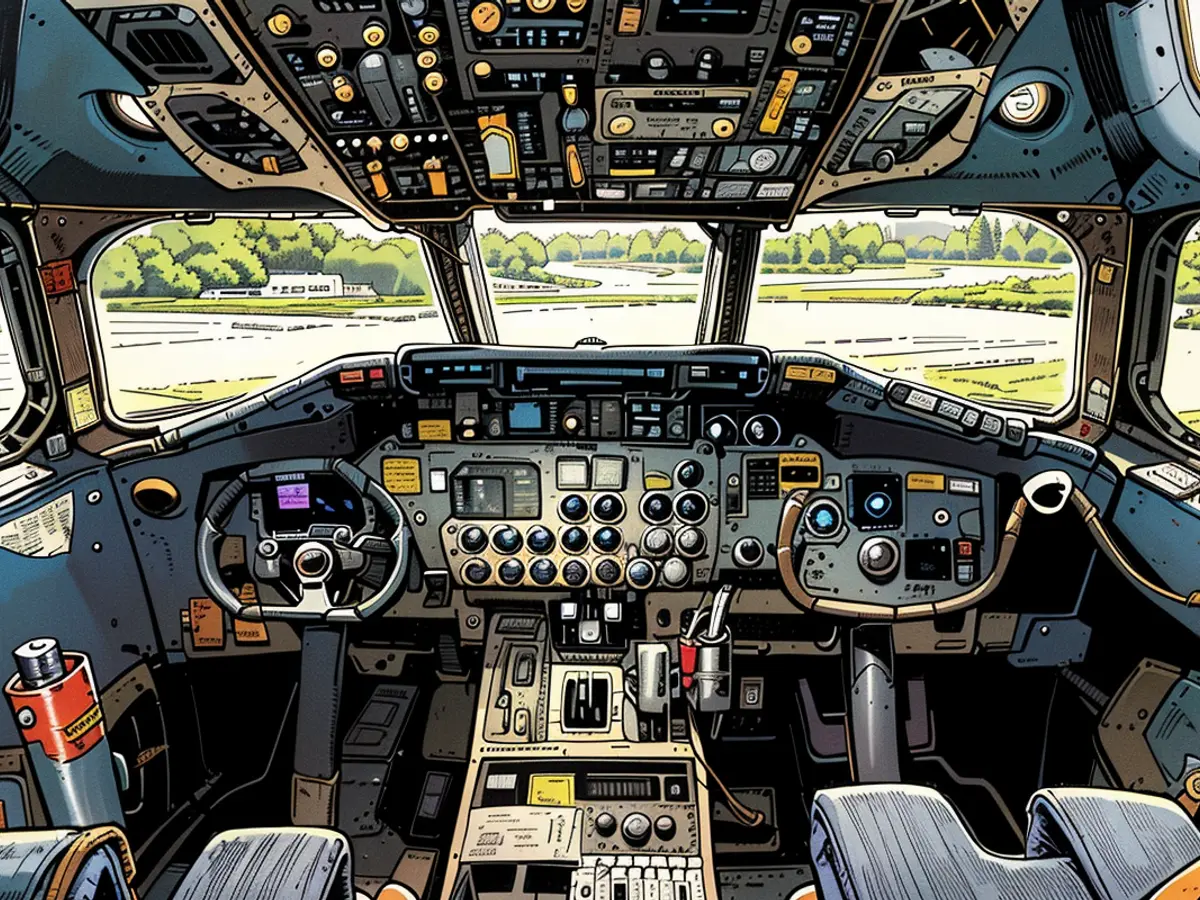The individual transforming jet planes into stylish residential abodes.
At FLY8MA Pilot Lodge, you can go on a scenic flight tour with breathtaking glacier views, take the reins for a flying lesson, or dive deep into pilot training.
When the night falls over the vast landscapes of Alaska, the Last Frontier, you can ascend the staircase to two extraordinary lodging experiences: a remodeled McDonnell Douglas DC-6 airplane and the latest addition, the McDonnell Douglas DC-9 – still carrying its DHL livery.
The rapidly expanding property is an ongoing project by FLY8MA founder Jon Kotwicki, who previously had a flight school in Florida, then worked as a commercial pilot, and eventually settled in Alaska.
Flying for the airlines "pays well and all, but it's a rather dull job," he admits. "Driving for Uber is more stimulating because you can interact with passengers."
Inspired by the south central region, where he spent a vacation hiking, fishing, and spotting wildlife like bears and grizzlies, he selected it as an area where he and his team, along with his loyal Pomeranian dog Foxtrot, could "buy a lot of land and maybe even establish our own airport and run our own show."
Ever-expanding playground
The site covers a little over 100 acres and began as just a runway. Then, cabins were added to accommodate students, followed by cabins for scenic flight guests.
The cabins were upgraded with high-end amenities like heated floors and towel bars. Then, Kotwicki thought, "Why not take it a step further? What if we got an old airplane and converted it into a house? Let's make it luxurious, with a Jacuzzi on the wing and a barbecue grill. Let's get two more, and have three of them."
An additional runway and hangar were constructed to match this expanding playground. "I have a tendency to go all out," he admits with a smile.
"It's thrilling to see grown adults in awe of the place, or kids running up and down the entire length of the airplane, acting wild and darting to the cockpit," he says. "It may be tiring, stressful, overwhelming, and costly to create these things – but it's fulfilling."
The first aircraft converted was the 1950s US-built DC-6, which used to transport freight and fuel to remote Alaskan villages.
Now, it's a cozy two-bedroom, one-bathroom rental, priced around $448 per night on Airbnb, complete with a fire pit on the wing deck.
Bookings are now available for the DC-9, a three-bedroom, two-bathroom unit featuring a sauna, hot tub, and heated floors. It can accommodate seven guests and is priced at approximately $849 per night.
Work is underway for the newest addition, a Boeing 727, which will serve as a lodge space for guests to gather.
"There'll be a massive kitchen, a big dining table for shared meals," explains Kotwicki. "We'll have a hot tub on the wings, cushy sofas. The tail will be a fantastic rooftop deck with a nice little fire pit to unwind and relax."
Kotwicki recently purchased a fourth plane: a Fairchild C-119 Flying Boxcar, a military transport aircraft produced from 1949 to 1955, which he describes as "so ugly, it's cool."
Control tower lodging with the Northern Lights
An upcoming highlight under construction is a 60-foot (18.3-meter) control tower with a glass geodesic dome, where guests will have the opportunity to lie in bed and admire Alaska's stunning Northern Lights.
Over time, Kotwicki is creating "a sort of our own little airport amusement park," he says.
Guests will be able to explore the older planes and various engines and propellers scattered around the property. The site already offers cross-country skiing trails, and Kotwicki has plans for a frisbee golf course and volleyball court.
Obtaining new aircraft for the site typically takes eight to nine months, according to Kotwicki, who explains that it involves contacting many sources and knocking on many doors until the perfect airplane becomes available for purchase and transportation to Wasilla.
Getting permission to convert them into accommodations has been relatively easy in Alaska, thanks to its lack of zoning.
"Fortunately, where we are in Alaska is totally unzoned. The property we bought, due to its size, we are allowed to do whatever we want with it," Kotwicki says.
"The biggest hurdle we jumped over was transporting them on the highway. But once they're here, the conversion process is relatively straightforward."
Logistics
Rural Alaska can be an ideal location for certain aspects of the project, but it presents challenges when it comes to climate.
Dry, arid environments, such as New Mexico's "boneyard" or Spain's Teruel Airport, are the best options for storing grounded aircraft.
Alaska, however, is at the polar opposite: "just a cold rain forest," as Kotwicki puts it, filled with swamps and permafrost. "From a maintenance standpoint, it's extremely difficult to maintain them up here."
In the coldest winter months, his heating bills for a single plane reach up to $1,500 to $2,000 per month.
"The common misconception" lingers that planes are effectively insulated, but Konticki disputes this. "Aluminum is actually great at dispersing heat," he explains, "making it a challenge to heat airplanes. They do fly in extreme cold temperatures up high, like minus 40 degrees Celsius, and they're burning approximately 20,000 pounds or 10,000 kilos of jet fuel per hour. This produces a substantial amount of excess heat."
Initially, Konticki mentions, planes have an insulation value around R3, akin to a double-paned window, while a well-insulated Alaskan home often reaches R30.
"We strip out the old insulation, completely clean the area, and then spray in top-notch foam foam with the highest R-value for its thickness," Konticki describes. "Usually, we manage to achieve an R value of 28 or 30 with the new insulation. Despite that, airplanes remain tricky to heat. They're essentially lengthy, skinny tubes."
If Konticki had opted for a flight school project in a location like Arizona, life would have been far simpler, he admits.
However, Konticki finds, "Alaska is truly outstanding, full of opportunities. It's challenging, yes, but it adds that special touch."
At FLY8MA Pilot Lodge, you can organize a unique travel experience by staying in one of the converted airplanes, such as the DC-6 or DC-9, and enjoy stunning views from the wing deck or relax in the sauna and hot tub.
The site offers various activities for travelers, including exploring the older planes and engines, cross-country skiing, and even playing frisbee golf or volleyball in the future.

Read also:
- Fear of escalation in the Middle East: US Secretary of State Blinken travels to the region again
- Government circles: US Secretary of State Blinken to travel to Middle East again
- Bridging days 2024: How you can double your vacation this year
- Germany has wanderlust: how tour operators and airlines are looking ahead to the next travel year








